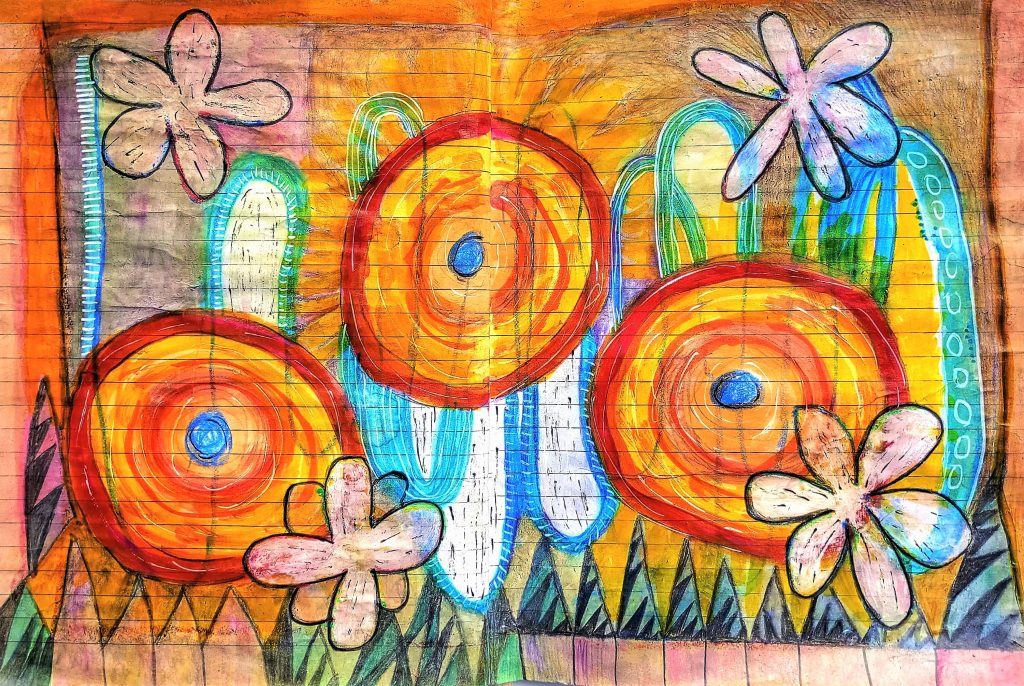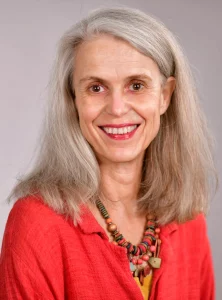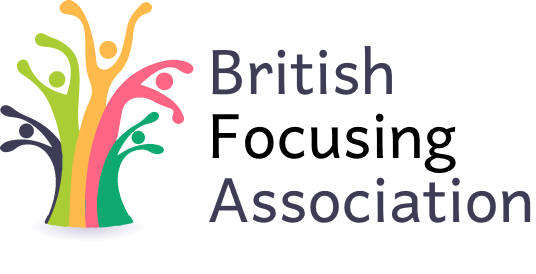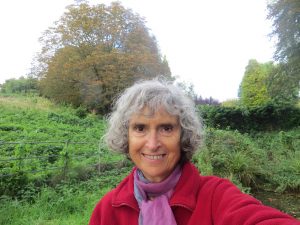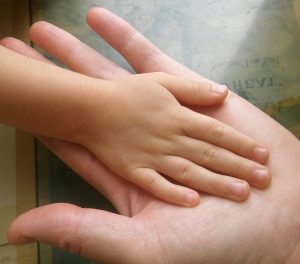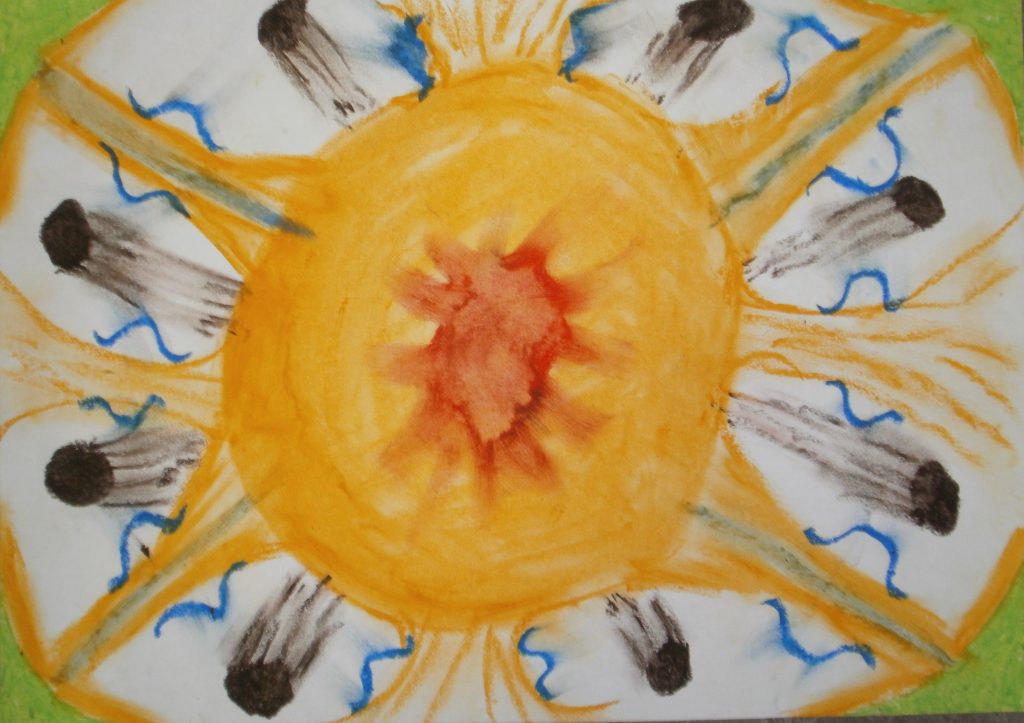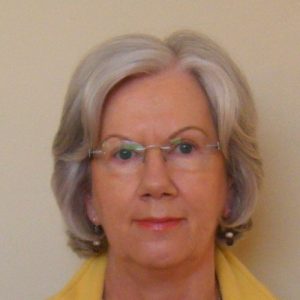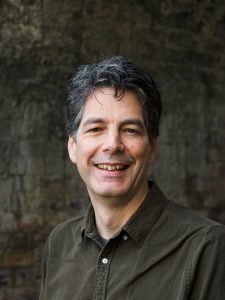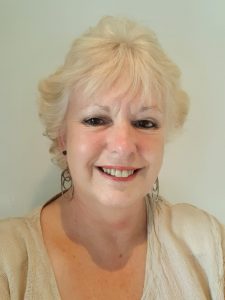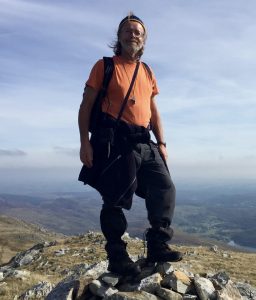Back to articles
23rd May 2020
SELF IN PRESENCE: THE TRANSFORMATIVE AGENT IN HEALING CHRONIC PAIN
Cathy Rowan
In 1999 I suffered a severe whiplash injury from a road traffic accident which left me with a severe chronic pain condition that very significantly restricted my functioning. Despite my best efforts I was unable to work, to drive or to do very much at all – my life was all about micro-managing my pain levels. I lived like this for over 10 years but then in 2010, due to a synchronistic set of events in my life, I made several discoveries which completely changed my life and have enabled me to find a pathway to healing my body. Central to the process of finding this path has been Focusing and most particularly the importance of Self in Presence as the agent of healing and renewal. This paper is an exploration as to how, by cultivating Self in Presence, one can facilitate and guide healing from both physical and emotional trauma.
Prior to July 2010 my understanding was that no-one knew exactly why a minority of people never recovered from a severe whiplash injury whilst others did. The more kindly side of the medical fraternity just saw it as a condition for which they did not have an explanation, whilst the harsher wing views people with problems like mine as malingerers. Either, way my life was about managing my condition, although I never stopped researching and exploring as something inside me felt clear that there was an explanation for why I was the way I was and that once this could be identified then a way forward to heal might be possible.
Background
The last decade of the twentieth century saw radical new developments in both the fields of neuroscience and also the treatment of trauma. New neuro-imaging techniques, such as the functional MRI scan, which enabled the brain “in process” to be imaged, as opposed to just a static one moment image, provided neuroscientists with a radical new insight as to how our brains and nervous systems work. Central to this new understanding is the identification of a process known as neuroplasticity – that the brain far from being a fixed entity is sculpted by our experience-dependent social process. That how our nervous system and brain develops is in direct response to our childhood experiences and in this discovery there was a meeting with those working in the field of trauma.
Trauma – How the Body Responds
Interest in trauma and its effects started with the problems of some soldiers who returned home from the battlefield with a range of psychological and physical symptoms. In particular the problems of some Vietnam veterans led to the identification of what became known as PTSD. Trauma became an entity in itself for study and one pioneer in this field has been Peter Levine whose life’s work on trauma has led to a much greater understanding of what trauma is and how it can be treated.
Trauma is now generally viewed as any event in which the person experiencing it perceives themselves to be powerless, overwhelmed and with no possibility of escape or help. In this scenario one cannot fight or run to escape so the only other option is to freeze. This is not a conscious choice made by the person but rather the lightning-fast reaction of their sub-cortical brain and nervous system. This moment of trauma-induced freeze will become hardwired into the body, though neuroplasticity, unless the body is supported to discharge the adrenalin-charged energy and it is the nature of this support that underpins all trauma treatments and their efficacy.
Levine also recognised that trauma is in “the eye of the beholder” so to speak – that what will traumatise one person need not necessarily have the same effect on another individual. The impact of an event on an individual and whether it is experienced as traumatic or not is dependent on their pre-existing neural architecture which itself has been created through past experience.
Trauma and Attachment
Further trauma experts such as Bessel van der Kolk and Bruce Perry, building on the work of people studying attachment patterns in children, identified another form of trauma variously known as complex trauma or developmental trauma. This is the trauma of a childhood wherein there are major attachment problems arising in the way the parents “connect” with their child and that this can create a situation for the child such that the very person who is the child’s security is actually also the source of their fear. This impact can occur right from the start of life, from the womb itself and due to the neuroplasticity of the brain results in a neural architecture that is based on the fear response.
Research has now found that in the first few weeks of life the baby physiologically attunes to its main caretaker’s physiology in order for the new-born’s body to learn to wire so that their neurology can self-regulate and self-soothe. Our bodies need to learn this capacity to “calm and soothe” as it is not innate; put simply, a calm and relaxed mother literally creates a calm and relaxed mode of being in her baby’s body. This then becomes neurologically hardwired and available for the rest of his life.
However if the baby’s caretaker’s physiology is in a fight/flight or freeze mode this is what the new-born baby attunes to and their nervous system will wire accordingly. Similarly children’s neurophysiology will continue to be configured by the nature of the relationships they experience and in situations where there is abuse and/or neglect (emotional as well as physical and sexual) by the child’s caretakers the child’s neurology, through neuroplasticity, will be formed leaving them with an abnormal degree of reactivity – they may be over or under aroused
Either way these children’s’ nervous systems will be hardwired into a fight-flight and freeze mode of reactivity with little or no ability to access the parasympathetic mode of rest and digest which the body needs to sleep, digest and heal. Their bodies learn to live in a mode of perpetual expectation of threat and danger.
It used to be thought that children were very resilient and unaffected by trauma now it is increasingly recognised that even children who have had good attachment experiences are not invulnerable to experiencing events, that maybe seen by their caretakers as “no big deal”, as traumatic and so not get the support to discharge the frozen adrenalin trauma energy that has been created by this event. This then will change their neural pathways and ultimately the way they respond to the world.
There is also an increasing body of evidence that suggests that this developmental trauma underpins a whole range of chronic problems in physical and mental health in not only children but also adults. One of Peter Levine’s colleagues, a neurologist called Robert Scaer, has written a seminal book called “The Body bears the burden” in which he describes how conditions such as non-resolving whiplash, fibromyalgia and many other similar conditions are caused by earlier life traumas that mean the sufferer’s body is literally stuck in fight/flight and freeze mode and has no ability to access the parasympathetic nervous system mode. The body is literally stuck in trauma.
In the late summer of 2010 I learned of the work of Bob Scaer and that what he described resonated with me. I had grown up in a household where both my parents had had considerable trauma in their lives and so were far from calm and relaxed so my autonomic nervous system learned from them to live in fight-flight or freeze modes – finally all the problems I had been experiencing since my accident made sense.
Healing trauma held in the body
In realising what was really at the root of my chronic pain condition I intuitively recognised that it was at a body-level that my body needed to both heal and learn a new way to be. “Something in me” knew that, as Bessel van der Kolk puts it: “The work of healing from trauma is, really about rearranging your relationship to your physical self. If you really want to help a traumatized person, you have to work with core physiological states and, then, the mind will start changing.” Further something in me also knew that trauma that is relational in origin can only be healed within a relating experience of two people.
Having done many years of more traditional therapy including Gestalt, I turned my search for treatment to look for more specific ones focused solely on healing trauma. I found that the Somatic Experiencing therapy developed by Peter Levine was now available in the UK, and at the same time, purely due to happenstance, I discovered Focusing. Both felt “the right next step” for my body as my already well-established mindfulness practice of many years had laid good foundations for these new approaches to build upon.
Focusing as the guide to healing the places of trauma held in my body
Discovering Focusing as an “Aha” moment – as I recognised instantly what it was all about – as for most of my life I had often had this feeling of “something deep inside me” trying to guide me. And whilst “the something” often had ideas that seemed very left field to my thinking brain when I followed “the something” it always was a positive and growthful experience for me. In finding Focusing I had found a way to choose to consciously access this body-knowing “something in me” part whenever I wanted. It was a transformative discovery.
So in September 2010 I commenced on my own trauma/chronic pain-healing pathway, which started with SE but also has taken in other body-based approaches such Reiki, massage, Music therapy, Reflexology, Yoga, T’ai chi, Qigong, Energy Medicine and Voice training. But at the core of this whole journey and its unfolding has been Focusing, the whole process has been guided by the “something inside me” letting me know what is the next right step for my body to heal.
Four years on, whilst SE and other body-based therapies I have had, have undoubtedly played their part in my recovery, I am certain that without Focusing I would not be healed to the degree I am today. My body would have been too overwhelmed. Now looking back what I realise is that my body was still stuck in the new-born highly sensitive arousal state and this meant I would find contact with other people very tiring as my physiology would just attune to theirs. My body did not know how to be a separate self-regulating organism.
So this paper is about how Focusing has enabled and is continuing to enable my body to learn to calm and soothe and thus to heal – how, through both Companioned and Solo Focusing, and the cultivation of Self in Presence, I found a way to gently be with my totally dysregulated physiology, in the company of other people. And over the months and years Focusing has enabled my body to begin to create its own innate rhythmic regulation.
The unique properties of Focusing as a guide to the healing of trauma
It is what Focusing uniquely offers that has enabled this process of healing to unfold in me in a way that no other approach provides. Focusing is able to be “just right” for my body which was so locked into to either being hyperaroused by the overwhelm of trauma and pain or to defaulting into mush-brain dissociation and exhaustion.
Focusing, as Manjudeva of Living Focusing, describes it is a “natural and gentle practice of listening to your inner sense of knowing, listening to your body”. Christopher McLean expands on this:” Focusing is a human process whereby we find inner guidance by attending to the body’s felt sense of the whole of something, including the more than we currently know about it. For example, our whole sense of a situation or problem. The felt sense is at first vague, or fuzzy, but from there you sense that you do know something about the situation. You might not have the words yet, but you can tell from the feel of it that it is exactly about something you know in your life”
Kevin Flanagan adds: “On one level Focusing is a bodily felt way of knowing and assessing a situation or a problem, one that is ruled not by the intellect or reason but by intuition or gut feeling. This visceral (gut) feeling is almost unconscious; it knows something, but that something may be unclear to the conscious mind, like a vague or uneasy feeling in the body. That is, until you focus on it. Then everything starts to become clear.” [My italics]
The process of Focusing was first identified and described by Eugene Gendlin, a colleague of the Psychotherapist, Carl Rogers when researching what made psychotherapy facilitate change in some clients but not in others. What he identified was what he called the felt sense and that within the essence of this bodily experience lay the kernel of the potential to change.
Eugene Gendlin wrote, concerning the process of change, that: “What is split off, not felt, remains the same. When it is felt, it changes. Most people don’t know this! They think that by not permitting the feeling of their negative ways they make themselves good. On the contrary, that keeps these negatives static, the same from year to year. A few moments of feeling it in your body allows it to change. If there is in you something bad or sick or unsound, let it inwardly be and breathe. That’s the only way it can evolve and change into the form it needs.”
In this quotation Gendlin is describing a process that is similar to that of range of meditation and mindfulness practices used for being alongside pain (both physical and emotional) but Focusing has elements that make it quintessentially different from a meditation practice.
Ann Weiser Cornell, on her website, writes: “With Focusing, you bypass the intellectualization and go directly to where you have a deep body-knowing about the situation. What is this body-knowing? It is the internal wisdom which we tend to ignore. Our bodies are able to sum up a whole situation into a special kind of experience called a felt sense. Felt senses are fresh; they look ahead; they are about what’s needed. When you learn Focusing, you learn how to get felt senses, be with them, and listen. From there, your whole life can change.”
Here she not only identifies the emphasis in Focusing on the body and its experiencing, but also, in particular, the feeling of something new and fresh – this is the felt sense and it is central to the whole process of change as described above by Gendlin. This is intrinsically different to meditation. When I meditate my intention is just to be with whatever is there – nothing more and nothing less.
However when I Focus, implicit in my deciding to Focus, is the intention of inviting my body/my whole being to be available to the living forward energy, the forward movement of my whole self as an organism. Here I am actively engaging with and relating to the process of my becoming. And it is this concept of “being in relation to” that has been such a profound facilitator of my healing process. Indeed this aspect of the relational nature of Focusing has itself lead to the creation of a particular form of Focusing called Inner Relationship Focusing by Ann Weiser Cornell and Barbara McGavin in the 1990-s which was derived from their own Focusing practices.
Inner Relationship Focusing and Self in Presence
At the heart of Inner Relationship Focusing is the central principle of Self in Presence – the capacity to be with whatever comes with “radical acceptance” (Ann Weiser Cornell) which has no agenda, no identification with any particular outcome and greets all with compassion, interest and curiosity. Cornell and McGavin write: “Presence is the natural state of the Self: calm, curious, interested, and able to act in mature and balanced ways. The client is understood to be capable of being Self-in-Presence, even when that is not his or her experience of him/herself. The practitioner speaks to the client from this assumption, and may also offer suggestions that strengthen and support the client’s experience of Self-in-Presence.”
One could be forgiven at this juncture for asking: what, then, is the Focusing Practitioner doing that is different from what a therapist or counsellor provides? And the answer to this is subtle but fundamental and is to be found in the particular form of “relationality” that is quintessentially unique to Focusing. In therapy of most kinds, with the possible exception of psychoanalysis, the therapeutic relationship between the client and the therapist is the container for the work. The therapy takes place within the interpersonal space and relatedness between the client and therapist. An example is well illustrated by Gestalt therapy which superficially appears to have much in common with Focusing.
Gestalt has at its core the” I-Thou” relationship, described by the philosopher Martin Buber which is a form of “relating to” wherein implicit is the sense that both people in the relationship exist and confirm each other – they are in relationship to each other’s humanity. (Buber’s name another type of “relatedness” “I-It,” which he saw a subject-object splitting, seeing the other as object to be manipulated to one’s own ends). So Gestalt also views relatedness as central to the healing process and it also, like Focusing, works on what is manifesting in the body in the “here and now”.
Also like Focusing, Gestalt views the relationship between practitioner and client as “horizontal, thus differing from the traditional therapy relationship” (Yontef). However Yontef describes this relationship thus: ” In Gestalt therapy the therapist and patient speak the same language, the language of present centeredness, emphasizing direct experience of both participants. Therapists as well as patients in Gestalt therapy show their full presence.” – the italics are mine to highlight the salient point of difference. In this regard Focusing is very different.
Yontef’s concept of the therapist’s direct experience and full presence generate an active two-way dialogue based in the present moment and connected to the body which in and of itself has many merits. However what I came to realise was that this type of relatedness does not facilitate healing of the kind of start of life process that was core of my chronic pain problem. It feels akin to taking a new-born to a rock concert and wondering why the baby is so distressed. Something different is needed to heal this start of life relatedness trauma – a different kind of presence and relating from another person. For me I found what I needed in IRF: its gentle attuned support where the focus of the Companion is entirely on supporting the Focuser’s own awareness and process to emerge was the form of relatedness that my physiology required in order to heal.
Cornell and McGavin, writing in their 2008 Focusing Folio article, describe this unique relatedness quality thus: “Within the inner relational space thus created, felt experiences appear that are in need of the comfort, support, compassion, and empathic listening from Self-in-Presence. The role of the practitioner is to support the client in offering these qualities to the partial-self experience that is in need of them. So the primary relationship is the ‘inner relationship’ within the client, and the relationship between the practitioner and the client supports this inner relationship”.
The difference then between therapist and Focusing practitioner is essential in terms of how what therapy and Focusing offer the client. In the former it is the interpersonal relationship that is key, in the latter the focus is on the relationship that exists within the client between her whole self which includes all her resources and a partial or less. The practitioner role is to recognise when the Focuser has lost connection with her larger Self and has become identified with a smaller self whose origins are historic. Having done this then the practitioner can gently support and guide the Focuser to reconnect with Self and so dis-identify from the partial self. The Focuser can then start creating a caring and loving relationship with this place from the past. In this way the part that was previously split off and disowned becomes known, “heard”, accepted and integrated into the larger whole Self.
It is this process that lies at the core of Inner Relationship Focusing and that has been so facilitative in enabling my body to heal from a past of much trauma and pain in a way that no other process offered. I believe this is because IRF is the process that fulfils van der Kolk’s maxim that “healing from trauma is about rearranging your relationship to your physical self.” So exactly how is it that Inner Relationship Focusing has so specifically helped me in healing my trauma? This is what the rest of this paper explores.
The nature of traumatic “memory”
To understand the healing I have experienced first requires an understanding of the nature of trauma and how it affects all that we are starting with our consciousness of the present moment. At the centre of the trauma experience is a form of memory which is called procedural and is not memory as we tend to think of it. To most people memory is a conscious cognitive process such as recalling events like what I ate for breakfast or did on holiday last year.
Procedural memory is very different – it is a process that is sub-cortical. Neurologist Robert Scaer describes it thus: “The primary function of procedural memory is the acquisition of information and skills that are necessary for survival. And most of these have to do with the unconscious functioning of your body. It’s how we learn skills and habits – the intentional repetition of a sensori-motor process until it is automatic and unconscious, such as learning a musical instrument, a sport or an art form. It’s also how we learn to adapt to danger and threat – the negative associations that we unconsciously learn to avoid, and the positive associations that we learn to seek. Survival-based procedural memory is based on classical conditioning – the pairing of life experiences with threat or reward. Although some survival instincts are genetic – fear of falling, snakes and spiders – most must be learned through experience – the spotted cat on the Kalahari Desert, the smell of gas in a home, the whine of an incoming missile. Such memories are acquired in a flash, and stored for a lifetime.”
Scaer continues:” Such procedural memories, acquired and stored as part of a traumatic experience and perceived not as skills, but as warnings of present danger, are also the essential ingredient for all of the symptoms of trauma”. To Scaer trauma is: “.. any negative life event occurring in a state of relative helplessness …can produce the same neurophysiological changes in the brain as combat, rape or abuse. What makes a negative life event traumatizing is not the literal life-threatening nature of the event, but rather 1) the degree of helplessness it engenders and 2) one’s history of prior trauma.”
“Our bodies hold the history of our pasts”
It is now apposite to turn to my own personal history: on 10th December 1999 at 8:30am I was involved in a shunt accident which I had no means of avoiding and at the time of impact I believed I would die and whilst I was not killed my body was injured. To my brain this experience of being helpless and unable to protect myself was one of mortal threat – I fulfilled Scaer’s first criterion for trauma. However it was the second precondition that led to my body literally becoming stuck in chronic pain – this accident literally unlocked the door allowing the procedural memory storehouse of my many prior traumatic experiences to become activated in my body. My body was literally stuck in reliving in a never-ending loop of fight/flight and freeze activation, starting with my start of life history of 1955.
Attachment Theory has now decades of research in showing that the foundation for optimal mental health develops within the attachment and bonding cycle between an infant and its primary caregiver. Secure attachment develops when the caregiver is repeatedly and reliably present and attuned to the baby/toddler thus creating a safe base from which the child can grow and explore the world having, through these experiences of bonding, embodied a sense of internal safeness. Thus a child’s attachment is largely influenced by their primary caregiver’s sensitivity to their needs. Parents who consistently (or almost always) respond to their child’s needs will create securely attached children. Such children are certain that their parents will be responsive to their needs and communications.
It is now known that, as Carol Nickerson writes: “The attachment cycle is the core ingredient for the development of a healthy nervous system, which therefore facilitates a kind of system regulation of our mind-body states. The ability to regulate our mental, physical, and emotional states is part of what enables us to develop a sense of inner security and well-being.” In the neuroscience literature Nickerson continues: “The research of Antonio Damasio has helped to elucidate the neural basis for the emotions and… asserts that emotions are the highest order, direct expression of bioregulation in complex organisms (1998), and that primordial representations of body states are the building blocks and scaffolding of development (1994)” (pp.3-4).
This is not what I had experienced. Both my parents had themselves experienced very considerable trauma in their past including their childhoods. I was my mother’s first child and the week before I was born her father died – the man who had sexually abused her in her childhood. My mother, at the best of times, was not someone who had a calm and regulated nervous system and so she could not offer this to me. My accident literally threw my body back to its default mode of survival-mode anticipating threats everywhere that it had learned from my mother and also to a lesser degree from my father and grandmother and as my body had no experience of safe calm and soothe mode to draw upon there it remained for over 10 years after my accident. This is undoubtedly the downside of neuroplasticity.
However it is the upside of neuroplasticity that has enabled my body to find its own way to heal. Nickerson writes: “This attachment process is the foundation for mind-body system regulation as well as for the development of healthy relationships. Perry and Szalavitz (2006) describe that “It is through the thousands of times we respond to our crying infant that we help create her healthy capacity to get pleasure from present and future human connection. Because both the brain’s relational and pleasure-mediating neural systems are linked with our stress-response systems, interactions with loved ones are our major stress-modulating mechanism. There is also a class of nerve cells in the brain known as mirror neurons, which respond in synchrony with the behavior of others. This capacity for mutual regulation provides another basis for attachment.”(p. 89-90)”.
How Focusing has helped me Heal
IRF has offered me a way to harness my brain’s neuroplasticity ability to learn to self-regulate through a Focuser – Focusing companion dyadic relationship. It is in the particulars of this form of relating which offers an adult form in providing for the threat-prone brain the learning that grows the neural pathways of safeness, trust and self-soothing which is what I needed but didn’t get in my start of life attachment experience. And implicit in this statement is the understanding that the Focuser’s Companion is able to be in Self-in-Presence and to skillfully provide this to me when that is not available to me and my body is lost in either overwhelm or numbing dissociation.
A Companion who is in Self in Presence requires that one is able to be fully present and embodying compassion, kindly interest and curiosity without any expectation or agenda about what will be and what will come in the Focuser. Another name for this could be “unconditional love” and in this sense alone it provides that which I never had. However there is more to the IRF Self in Presence Companioning than merely the energetic presence of the caring other and it is here that IRF has an approach that provides, for me, as an adult with a brain that has been configured by fear and threat, a way to find the living forward energy that is stuck at a literally body level to emerge.
Einstein famously said: “”No problem can be solved from the same level of consciousness that created it.” The concept of “inner child” work is now well known but my experience of healing trauma is that it is from an adult place grounded in the physicality of the present moment where I can find and create healing. I have learnt that, for me to do the deep Focusing work to heal this start of life trauma, I absolutely require the support of the Companion who is firmly grounded in the present moment.
Further I need the Companion to be fully Self in Present for my body to feel safe enough to venture into the process wherein I can cultivate “the just being with” compassionate company to the traumatised places within my body that are so visceral and somatic. These places have a hyper-vigilantly honed radar to anything that could remotely remind it of the original threat of a person who was supposed to care for me but was either just not there or else hurt me. So any hint that the Companion might be like this can, depending on how fragile a process this particular part in me has, lead to a moving away from and a retrenching in my body to somewhere safer.
However when the Companion is able to be fully present and alongside then meaningful shifts come as my body has learnt to recognise the feelings of safeness and trust with it and to trust them to be good enough to protect me. It is from this place of knowing what is safe and what can be trusted that then lead to the body being able to shift from its traumatized constant loop of reliving the threat to the historical event just being a remembered event from my past. Thus my body is freed from its grasp and has now built further self-regulating resources. The Companion who is Self in Present has provided me with the support to build a bridge between the historical experience of the event and the resources I now have 59 years on!
And this adult- appropriate resource can be found in the language of IRF which employs implicit language that not only connects with and resonates with identification with those experiences that enhance and cultivate the growth of Self in Presence but also uses language to differentiate out those body places which hold the trauma and then to begin the process of building a relationship between Self in Presence firmly grounded in the embodied present moment and this historic time-loop which I call “a trauma bubble”. With the skilled Companion’s use of implicit language when reflecting the words of the Focuser, she is able to subtly but powerfully invite the awareness of what is and is not trauma-based by the simple usage of “I/You/We” as ways to support Presence and “something in me/you…” or “I/You are sensing a part of you that…” to start the differentiation from identification with trauma.
One of the unique factors of Focusing is its invitational mode of relating. This is to be found in the way the Companion is to the Focuser but it is also an implicit invitation as to how to be with whatever comes – so it is a process of skilled attunement. Just as a “good enough” caretaker is able to (most of the time) be attuned to the baby. Further, unlike any other “therapy” form that is based on relatedness the speed of the process is entirely in the hands of the Focuser, thus it enables them and their physiology to learn what is just right as opposed to adapting attuning to “the other” and their level of arousal. If the Companion makes a suggestion that feels too fast or wrong the Focuser’s fastidiousness in noticing that these are not “just right” for her is critical to her healing process. She is taking ownership of what she needs, just as the new baby’s needs lead the good enough attuned parental attention.
One aspect of this parental attunement is called mirroring and this is a way in which the baby learns to feel and acknowledge its feelings. Fonagy studied emotionally attuned parenting and noted that by mirroring back a babies affect in a way that was both contingent and marked ( by placing emphasis on the felt experience) the caretaker was reflecting back and affirming the baby’s experience. And from this marked mirroring came the child’s awareness of having her own mind and experiencing her own experiences and relating to them as valid and true for her. It is this form of relating that is offered by a skilled Companion to the Focuser.
One of the key problems for those of us with early life trauma is that our experiences and feelings were not acknowledged or affirmed. In my case this was so strongly the case that I found in conventional talking therapy and even to a degree in SE was my sense of what I was feeling was too tenuous to connect with, I learnt at a very early age my feelings were dangerous and I learnt to survive by not feeling them, by dissociation as this is the only recourse available to me as a baby and child. Inner Relationship Companioned Focusing however offers an adult-appropriate way of healing start of life relational trauma.
Through IR Companioned Focusing, I have been able to learn from an embodied place to feel safe and to trust, believe and relate to my own inner experience and feelings. Out of this healing has come a gradual reduction in my chronic pain health issues. The original traumas I suffered were relational and it has only been through relatedness that they are healing. As Carol Nickerson writes: “Thanks to the discovery of neuroplasticity, we know that help through dyadic regulation is always a possibility.”
Direct References
www.livingfocusing.co.uk
www.thefocusingspace.com
Kevin Flanagan, Everyday Genius, p.18
Ann Weiser Cornell & Barbara McGavin: Inner Relationship Focusing. The Focusing Folio: Volume 21, Number 1, 2008
Gary Yontef: Awareness, Dialogue and Process
The Dissociation Capsule: an article by Robert Scaer
Inner Relationship Focusing: Strengthening Attachment and Interpersonal Neurobiological Integration by Carol J. Sutherland Nickerson, L.I.C.S.W., C.F.T. to be found on www.focusingresources.com
Attachment in Psychotherapy by David Wallin
Source Material
http://www.healingresources.info/adults_relationships.htm
http://www.traumahealing.com/somatic-experiencing/peter-levine.html
http://www.traumacenter.org/products/pdf_files/networker.pdf (Bessel van der Kolk
Susan Gerhardt: Why love matters
Bruce Perry: Born for Love – why empathy is essential – and endangered
http://www.traumasoma.com/ (Robert Scaer’s website)
http://www.helenanash.com/index.php?page=about&category=Quotes_About_Life&display=35
Back to articles
